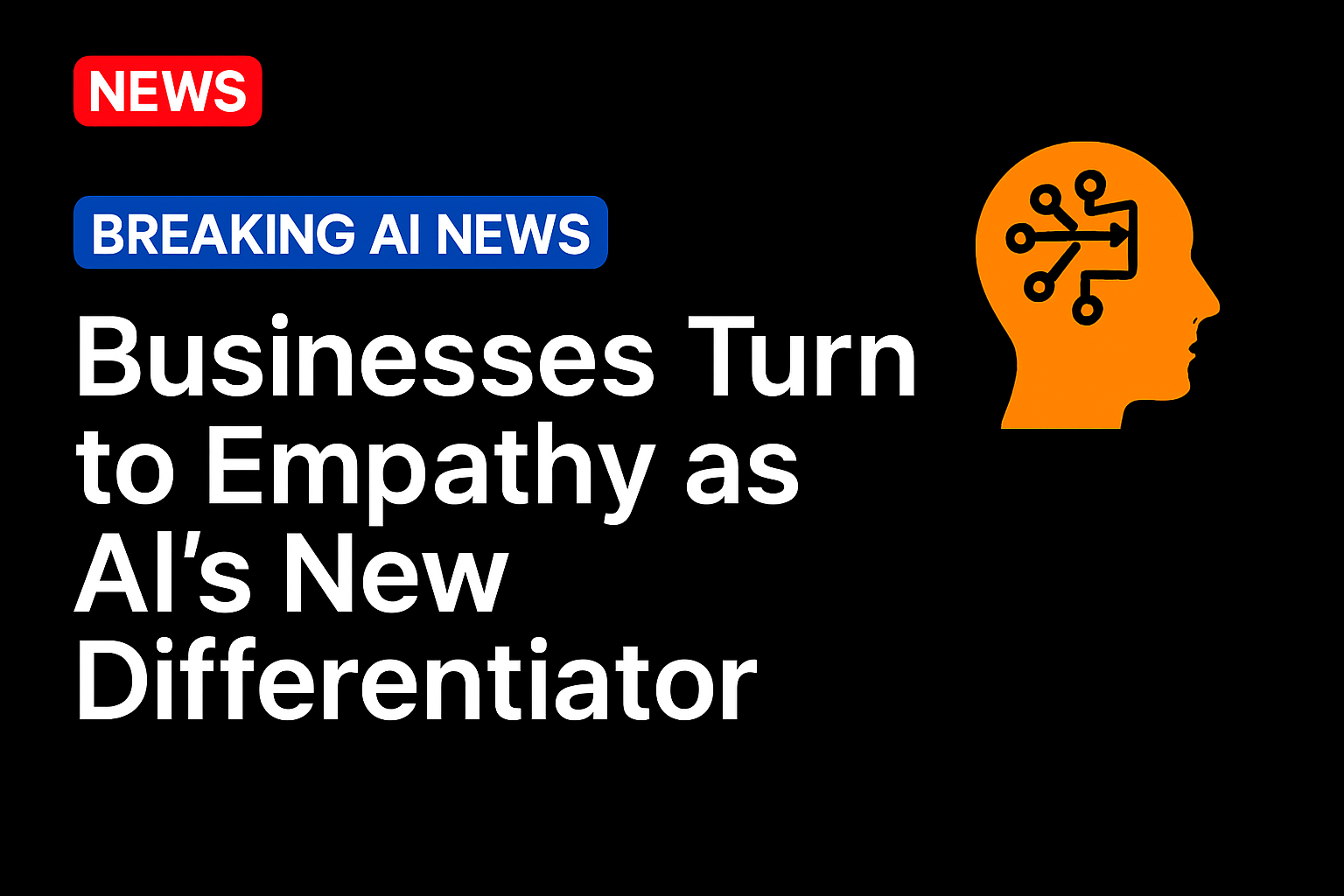
Artificial intelligence (AI) is becoming a core part of organizational infrastructure, but its ability to provide a lasting competitive advantage is waning. A MIT Sloan Management Review analysis argues that as AI tools and data capabilities become accessible to nearly every enterprise, differentiation will depend less on automation and more on how technology interacts with people. This has shifted attention toward emotion-aware systems that can detect and respond to human signals such as tone, sentiment or behavioral cues in real time.
The World Economic Forum (WEF) describes the next stage of development as agentic AI with empathy. These systems extend beyond automation by integrating emotional awareness into decision-making and communication. They are built to interpret tone, intent, and sentiment, allowing AI to respond with contextually appropriate actions rather than predefined outputs. The WEF notes that this form of agentic intelligence could help organizations move from efficiency-based models to ones that combine operational precision with emotional connection.
Research from Deloitte on affective computing shows how emotion-sensing technologies can reshape service interactions by detecting stress or confusion and dynamically adjusting communication. While Deloitte’s findings are based on government pilots, the same mechanisms can apply to corporate settings where customer experience and confidence drive retention. Emotion-aware interfaces could help users navigate complex tasks, de-escalate frustration, or regain trust after a failed interaction.
What Research Reveals
Academic research is beginning to quantify how emotion-aware systems influence human decisions. A recent study found that emotional data derived from social media interactions can enhance financial risk models. When combined with conventional financial variables, emotion-based features improved prediction accuracy for online lending platforms. The study demonstrates that emotional sentiment such as anxiety, confidence or volatility may provide early indicators of consumer behavior that traditional metrics fail to capture.
Another paper titled “Toward Emotionally Intelligent Artificial Intelligence”, explores the science behind emotion recognition in AI. The authors argue that emotion is not a side effect of cognition but a core component of intelligent behavior. They note that systems trained to read affective states can improve collaboration, learning, and persuasion, but only when governed by ethical design principles that prevent manipulation or bias. This reinforces the view that emotional intelligence in AI must balance technical sophistication with psychological and moral understanding.
Balancing Empathy and Governance
The relevance of these developments is growing in finance, where customer relationships depend on trust and perception. Emotion-aware systems could improve fraud detection by identifying stress indicators during authentication, assist in compliance by flagging linguistic signals of discomfort or hesitation, or personalize digital banking by adapting tone and pacing to a user’s emotional state.
However, these opportunities also introduce new responsibilities. Deloitte warns that emotional data is highly sensitive and context dependent, requiring explicit consent, transparency and human oversight. Misinterpreting or misusing emotion data could erode the very trust such systems aim to build.
A Forbes analysis offers a cautionary perspective, emphasizing that AI-driven empathy remains imitation rather than intuition. Algorithms may mirror affect but lack the contextual reasoning and accountability that define genuine human connection. This suggests that emotion-aware systems should augment, not replace, human judgment, especially in sectors where ethical and relational stakes are high.
Source: https://www.pymnts.com/




